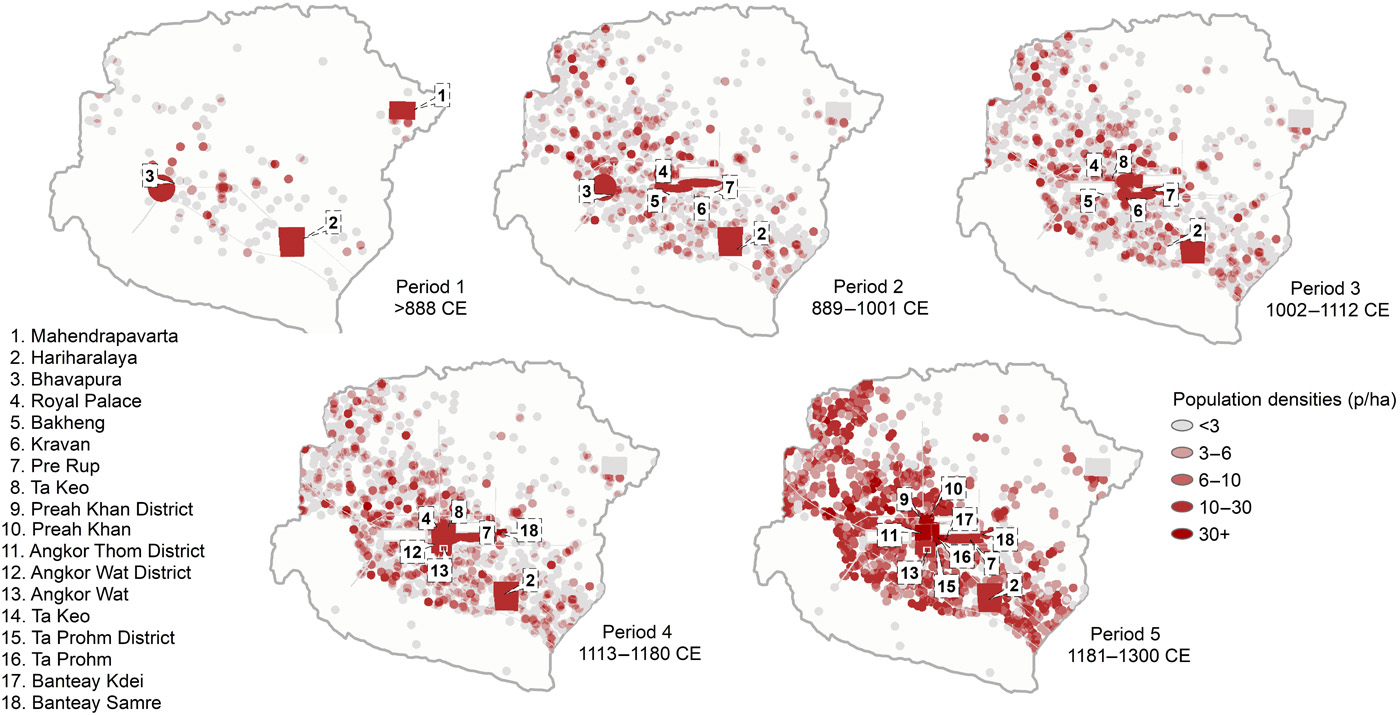Diachronic modeling of the population within the medieval Greater Angkor Region settlement complex
Authors: Sarah Klassen, Alison K. Carter, Damian H. Evans , Scott Ortman, Miriam T. Stark, Alyssa A. Loyless, Martin Polkinghorne, Piphal Heng, Michael Hill, Pelle Wijker, Jonathan Niles-Weed, Gary P. Marriner, Christophe Pottier , Roland J. Fletcher
Abstract: Angkor is one of the world’s largest premodern settlement complexes (9th to 15th centuries CE), but to date, no comprehensive demographic study has been completed, and key aspects of its population and demographic history remain unknown. Here, we combine lidar, archaeological excavation data, radiocarbon dates, and machine learning algorithms to create maps that model the development of the city and its population growth through time. We conclude that the Greater Angkor Region was home to approximately 700,000 to 900,000 inhabitants at its apogee in the 13th century CE. This granular, diachronic, paleodemographic model of the Angkor complex can be applied to any ancient civilization.
https://advances.sciencemag.org/content/7/19/eabf8441.full

